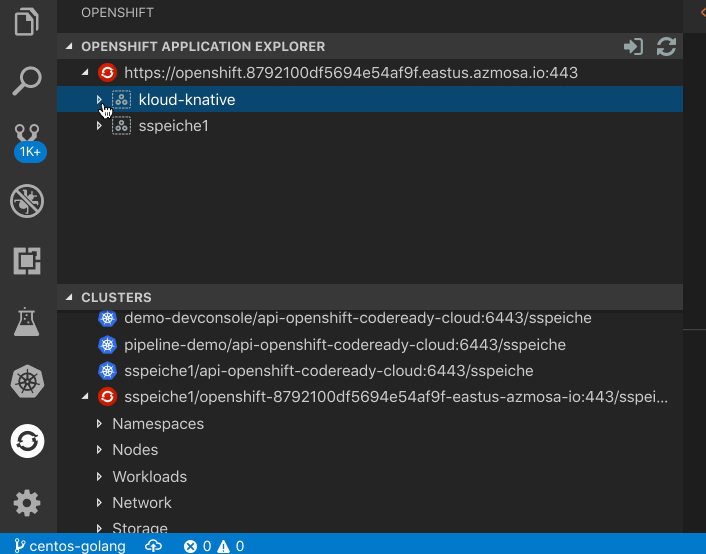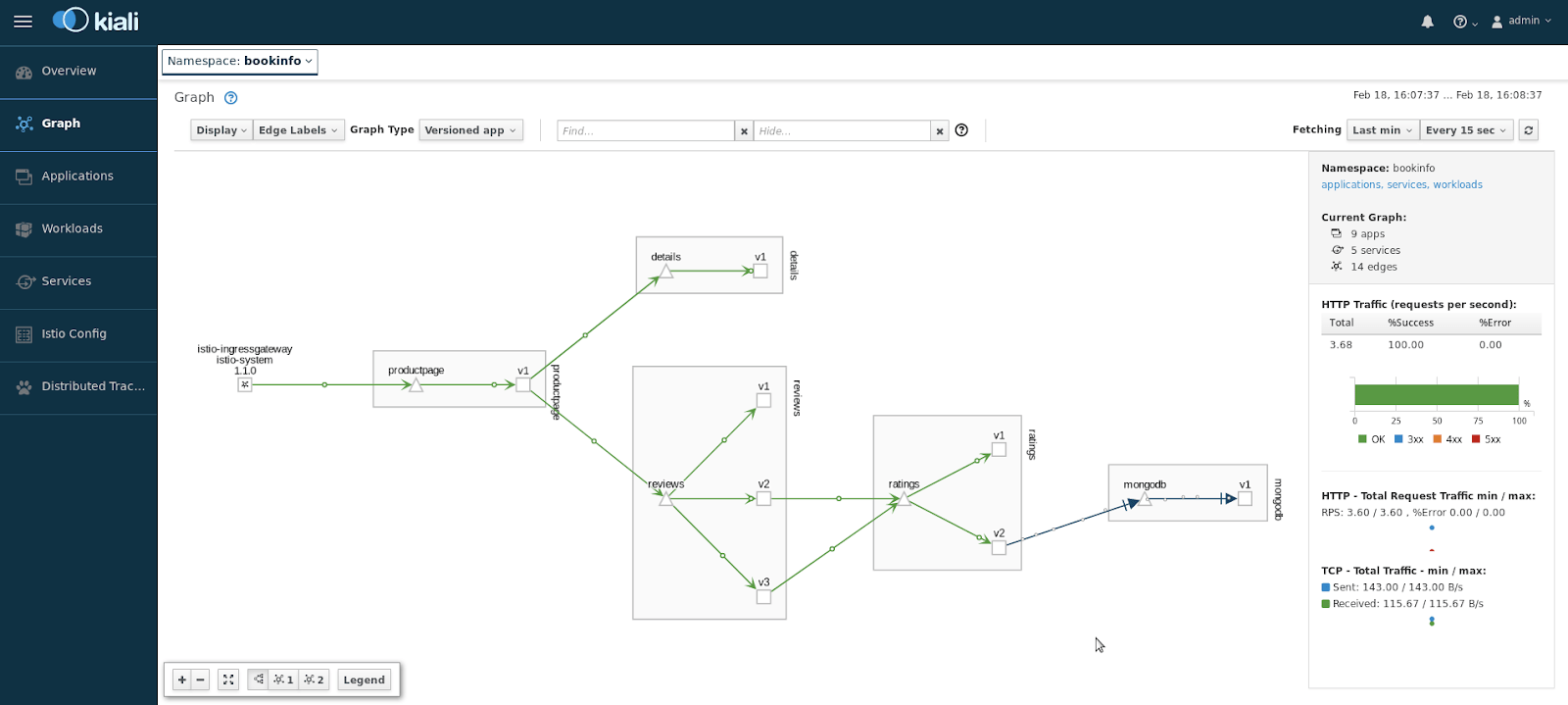
Recall that in May 2019, we introduced Red Hat OpenShift 4, the next generation of our Kubernetes platform, which we redesigned to simplify the management of containerized applications in production environments.
The solution was created as a self-governing platform with software auto-update and life-cycle management functions in a hybrid cloud and is based on the proven Red Hat Enterprise Linux and Red Hat Enterprise Linux CoreOS. In version 4.2, the focus was on making the platform more convenient for developers. In addition, we simplified the work of managing the platform and applications for cluster administrators by offering means of migration from the 3rd to the 4th version of OpenShift, as well as implementing support for configurations without access to the Internet.
Where is the speed here?
Version 4.2 greatly simplifies working with Kubernetes, offering a new OpenShift management console mode optimized for development tasks, as well as new tools and plugins for building containers, organizing CI / CD pipelines and implementing serverless systems. All this helps programmers to focus more focused on their main task - creating application code, without being distracted by the features of Kubernetes.

View application topology in the developer console.

New developer mode of the OpenShift console
New tools for developers in OpenShift 4.2:
- The development mode of the web console helps developers focus on the main thing, displaying only the necessary information and configurations. An advanced UI for viewing topology and building applications makes it easy to create, deploy, and visualize containerized applications and cluster resources.
- The odo toolkit is a special command line interface for developers that simplifies application development on the OpenShift platform. Organizing interactions like git push, this CLI helps developers to create applications on the OpenShift platform without extra effort, without delving into the intricacies of Kubernetes.
- The Red Hat OpenShift Connector for Microsoft Visual Studio Code, JetBrains IDE (including IntelliJ) and the Eclipse Desktop IDE provides easy integration with the tools used and allows you to develop, build, debug, and deploy applications for OpenShift in a familiar IDE environment.
- Red Hat OpenShift Deployment Extension for Microsoft Azure DevOps . Provides users of this DevOps toolkit with the ability to deploy their applications on Azure Red Hat OpenShift or in any other OpenShift clusters on the Microsoft Azure DevOps platform.

Plugin for visual studio
Full OpenShift on a laptop
Red Hat CodeReady Containers , which are ready-made OpenShift clusters optimized for deployment on a workstation or laptop, provide the opportunity to develop cloud-based applications in local mode.
Service mesh Service Mesh
Our OpenShift Service Mesh solution, built on the basis of Istio, Kiali and Jaeger open source projects and a special Kubernetes operator , simplifies the development, deployment and maintenance of applications on the OpenShift platform by providing the necessary tools and adopting automation of cloud applications based on modern architectures such like microservices. The solution allows programmers to be freed from the need to independently deploy and maintain specialized network services necessary for the created applications and business logic.
The Red Hat OpenShift Service Mesh , available for OpenShift 4 , is literally tailored for developers literally “from and to” and offers features such as tracing, metrics, visualization and monitoring of network communications, as well as installing and configuring the service mesh in one click. In addition, the solution offers operational management and security benefits, such as encrypting traffic between servers within the data center and integration with the Red Hat 3scale API gateway.

Advanced visualization of cluster traffic using Kiali tools as part of the OpenShift Service Mesh
Serverless computing
Our other solution, OpenShift Serverless , helps you deploy and run applications that scale easily on demand up and down to level zero. This solution, built on the basis of the Knative project and available in the Technology Preview version, can be activated on any OpenShift 4 cluster using the corresponding Kubernetes operator, which makes it easy to get started and install the components necessary for deploying serverless applications or functions on OpenShift. The developer mode of the OpenShift console, which appeared in version 4.2, allows you to use serverless options in standard development processes, such as Import from Git or Deployan Image, in other words, you can create serverless applications directly from the console.

Configuring serverless deployment in the OpenShift console
In addition to integration with the developer console, the new version of OpenShift has other improvements in terms of serverless. In particular, this is kn - the Knative command-line interface that provides convenient and intuitive operation, allows you to group objects that are necessary for applications; take snapshots of code and configurations, and also makes it possible to map network endpoints to specific versions or services. All these features, available in the Technology Preview version through the OpenShift Serverless operator, help developers to get started with serverless architecture and flexibly deploy their applications in a hybrid cloud without being tied to specific infrastructures.
CI / CD Cloud Conveyors
Continuous Integration and Delivery (CI / CD) are today's key development practices that increase the speed and reliability of software deployment. A good CI / CD toolkit allows development teams to optimize and automate feedback processes, which is crucial for successful agile development. In OpenShift, you can use the classic Jenkins or our new OpenShift Pipelines solution as such tools.
Jenkins is the de facto standard today, but we are linking the future of container CI / CD with the Tekton open source project. Therefore, OpenShift Pipelines is built on the basis of this project and better supports such cloud-based approaches as pipeline-as-code ("pipeline as code") and GitOps. In OpenShift Pipelines, each step is performed in its own container, so resources are used only during the execution of this step, which allows developers to fully control their delivery channels, plug-ins and access control without using a central CI / CD server.
OpenShift Pipelines is still in the Developer Preview stage and is available as an appropriate operator, which can be used in any OpenShift 4 cluster. Jenkins can be used both in the 3rd and 4th versions of OpenShift.

Red Hat OpenShift Conveyors
Hybrid Cloud Container Management
Automated installation and updating of OpenShift brings the hybrid cloud as close to the canonical cloud as possible from the point of view of experience. The fourth OpenShift was previously available for major public cloud platforms, private cloud environments, virtualization platforms, and bare-metal servers, but version 4.2 adds two more new public cloud platforms to this list - Microsoft Azure and Google Cloud Platform, as well as private OpenStack clouds .
The OpenShift 4.2 installer has been finalized for various target environments, as well as being trained for the first time to work with isolated (not connected to the Internet) configurations. The stand-alone installation and mandatory proxy mode with the ability to provide your own certificate chains (CA bundle) help ensure compliance with regulatory standards and internal security protocols. Silent installation mode always allows you to have the latest version of the OpenShift Container Platform where there is no Internet access, or in environments with strict image testing policies.
In addition, deploying a full OpenShift stack using Red Hat Enterprise Linux CoreOS, a lightweight version of Red Hat Enterprise Linux, allows you to get your cloud ready in less than an hour after the installation starts.
Red Hat OpenShift allows you to unify the processes of creating, deploying and managing container applications in the cloud and on-premises infrastructures. With a simpler, automated, and faster installation, OpenShift 4.2 is now available on AWS, Azure, OpenStack, and GCP platforms, enabling organizations to efficiently manage their Kubernetes platforms in a hybrid cloud.
Easy migration from OpenShift 3 to OpenShift 4
New workload migration tools make it easy to upgrade to OpenShift 4.2 from previous versions of the platform. Transferring loads from the old cluster to the new one is now much faster, easier and with a minimum of manual operations. It is enough for the cluster administrator to select the source OpenShift 3.x cluster, mark the project (or namespace) on it and then specify what to do with the corresponding permanent volumes — copy them to the target OpenShift 4.x cluster or transfer them. After this, applications continue to run on the source cluster until the administrator completes their work.
OpenShift 4.2 supports various migration scenarios:
- Data is copied using an intermediate repository based on the Velero project. This option allows you to migrate with a change in the storage system when, for example, Gluster is used in the original cluster and Ceph is used in the new cluster.
- The data remains in the current repository, but it connects to the new cluster (permanent volume switch).
- Copying file systems through Restic.
First night right
Often, our users would like to be able to try out the planned innovations of OpenShift long before the release of a new release. Therefore, starting with OpenShift 4.2, we provide customers and partners with access to the pre-built nightly builds . Please note that these assemblies are not intended for use in production, are not provided with support, are poorly documented and may have incomplete functionality. The quality of these assemblies grows as you approach the final version.
The nightly build assemblies allow customers and partners to familiarize themselves with new features in the early stages of development, which can be useful in terms of planning deployment or integrating OpenShift with ISV developers' own solutions.
Note to OKD Community Members
Work has begun on OKD 4.0, an open source Kubernetes distribution created by the development community that underlies Red Hat OpenShift. We invite everyone to give their assessment of the current status of OKD4 , Fedora CoreOS (FCOS) and Kubernetes as part of the OKD Working Group, or to monitor progress on the OKD.io website.
Note:
The word "partnership" in this publication does not mean a legal partnership or any other form of legal relationship between Red Hat, Inc. and any other legal entity.